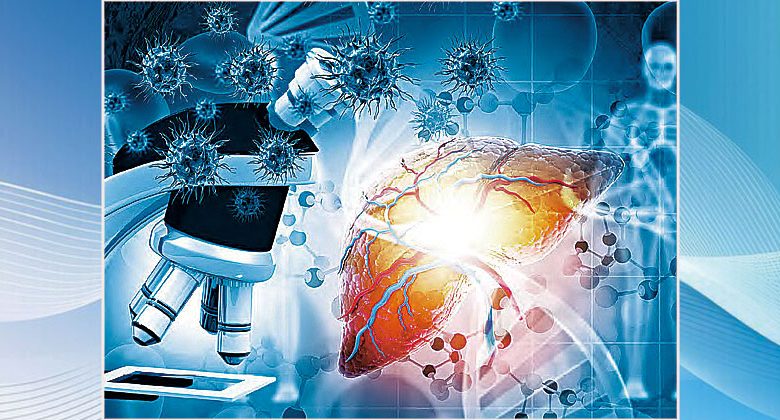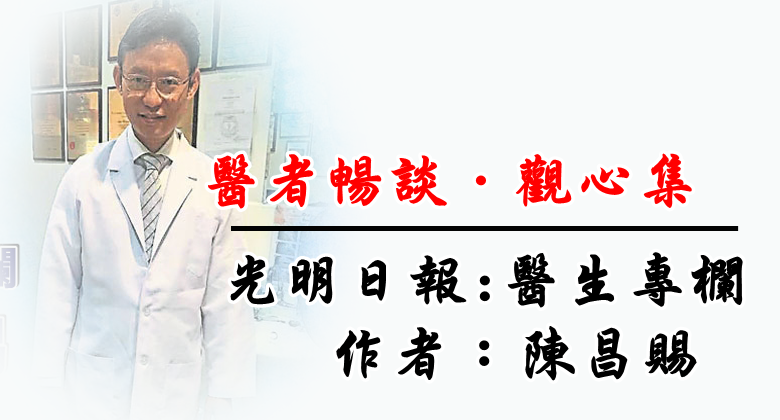[Local Medical]Early diagnosis is key and hydronephrosis in babies can be cured
![[Local Medical]Early diagnosis is key and hydronephrosis in babies can be cured [Local Medical]Early diagnosis is key and hydronephrosis in babies can be cured](https://webcdn.guangming.com.my/wp-content/uploads/2024/03/1313-780x420.jpg)
Text: Chen Qiulei Compiled by: Liang Yingxiu
(Kuala Lumpur News) What is hydronephrosis (commonly known as water kidney) in infants and young children? It refers to a disease in which urine accumulates in the kidneys, causing them to enlarge. This disease occurs because of obstruction or reflux, which prevents the normal delivery of urine from the kidneys to the bladder. If one or both kidneys will be affected by hydronephrosis, permanent damage will occur in the long run.
It cannot be prevented before birth
Dr Nada Sudhakaran, Consultant Pediatric Surgeon, pointed out that healthy kidneys help filter waste and fluids from the blood, turning them into urine, which then passes through the ureters into the bladder and is excreted through the urethra.
Hydronephrosis occurs in two main situations. One is that the ureter is blocked and urine cannot pass normally. Then, urine will flow back and accumulate, causing one or both kidneys to swell.
Another situation is that the urine originally transported from the kidneys to the bladder through the ureters refluxes, which means that when the normal transport cannot be carried out, the urine flows back from the bladder to the ureters or renal pelvis, causing the urinary tract to swell due to the reflux of urine. Also known as hydronephrosis.
What exactly causes hydronephrosis in infants and young children?
“So far, we don’t know why, but most of them are congenital defects, such as bladder outlet obstruction in men (very rare), pelvic-ureteral junction (PUJ) or ureterovesical junction (ureterovesical junction) obstruction, double or double kidneys ( kidney duplication) and vesico-ureteric reflux (VUR) disease.”
Since the main cause of the disease cannot be found, can parents prevent this disease from happening to their unborn children? The answer is “can’t”. This is because most hydronephrosis in infants occurs before delivery, so it cannot be prevented at all.
Although it cannot be prevented, there are some medical methods to detect the disease early, such as routine prenatal check-ups during pregnancy and various types of physical examinations performed by doctors after the baby is born. As long as you follow the routine examination instructions, even if you are diagnosed during pregnancy, you can make complete preparations for treatment before and after the expected date of delivery.
Pay attention to fever and urinary discomfort
In Malaysia, 1 in every 100 babies born will suffer from hydronephrosis. Most children are diagnosed with hydronephrosis during a prenatal scan or at birth, and sometimes it is not diagnosed until they are older.
Seeing the above data is indeed jaw-dropping, but fortunately, the condition of most patients can be cured, and some may recover automatically with age, or even “disappear” before birth.
“I would like to remind parents that complications may still occur, so early diagnosis is a crucial step, including all examinations 3 days after delivery. As long as it is discovered early and treated accordingly, recovery is possible. The chances are high.”
As mentioned above, some cases were diagnosed with hydronephrosis before birth. For infants and young children after birth, the possibility of hydronephrosis can be discovered from some symptoms. For example, if some physical symptoms appear after birth, such as unexplained fever, discomfort during urination, abdominal pain, drowsiness and irritability, as well as cloudy or blood-contaminated urine, parents must immediately send the child to the hospital for examination to find out the cause of the disease.


Minimally invasive injectable drug stops kidney damage
Hydronephrosis in infants and young children can be large or small, and delayed or improper medical treatment may cause permanent kidney damage.
In fact, hydronephrosis in infants and young children is not fatal, as it can be cured in a short time with continued observation, testing and treatment.
However, some cases are more urgent and require immediate treatment.
Nada takes the aforementioned male bladder outlet obstruction as an example. This disease is mainly caused by obstruction of the posterior urethral valve, which prevents urine from being discharged from the body and flows backward, resulting in swelling of the bladder and ureter. In order to prevent the condition from worsening, it is necessary to urinate directly to the fetus while it is still in the mother’s body, otherwise it may damage both kidneys.
Most are diagnosed prenatally
He said this situation must be handled with caution. Without appropriate treatment, it will lead to more serious kidney or other organ problems. Complications include urinary tract infection, severe kidney damage, ureteral stones and bladder dysfunction. .
Symptoms of urinary tract infection caused by hydronephrosis include urgency or frequency of urination, pain during urination, cloudy urine, back pain, fever and vomiting.
Most cases of fetal hydronephrosis are diagnosed prenatally. For older children, diagnosis can usually be made through medical history and physical examination. However, to confirm the diagnosis, a diagnostic test like ultrasound is necessary. Ultrasound testing can show whether urine is trapped in the ureters between the kidneys and bladder.
“It is worth mentioning that hydronephrosis diagnosis also involves some additional tests to find out the cause of hydronephrosis, including X-rays, IV urology tests, computed tomography scans, nuclear medicine scans (MAG3, DMSA, etc.), Cystoscopy and ureteroscopy.”
He reminded that parents must be concerned that hydronephrosis can cause permanent kidney damage. Any medical treatment is designed to maintain kidney function and avoid more serious kidney damage. A blocked kidney can increase the risk of permanent damage to the kidney, as can a kidney infection.
Circumcision prevents urinary tract infection
Formulating a treatment plan for infant hydronephrosis depends on the condition of the disease. After a series of tests, the method to treat the patient can be determined.
He said that taking the treatment of vesicoureteral reflux as an example, doctors will use ultrasound for preliminary testing, and then use micturating cystourethrography (MCUG), cystoscopy and ureteroscopy for further testing, and use catheters if necessary. A small amount of contrast dye is injected into the body to fill the bladder and can tell if a reflux problem is occurring when the baby urinates.
“It should be noted that urinary reflux can easily cause infection. Therefore, once the reflux problem is confirmed, boys must undergo circumcision to reduce the risk of urinary tract infection; girls should drink more water and consume high-fiber foods to promote Defecation and taking probiotics can improve urinary reflux. However, if the problem persists, patients will need to take long-term antibiotics.”
In addition, doctors can also inject hyaluronic acid/dextranome to treat vesicoureteral reflux. This treatment does not require surgery. The method is to use an endoscope to enter the bladder through the urethra and inject drugs to complete the treatment. This is a painless, minimally invasive treatment for sick children.
“Grade the severity of urinary reflux conditions on a scale of 1 to 5.
Level 5 is the most serious.
After the above treatment, it can be reduced to level 1, and the cure rate is as high as 85%.
Although this treatment cannot achieve 100% recovery, it can at least reduce the infection caused by reflux and prevent kidney damage.
Another treatment option is surgery for pelvic ureteral obstruction, known as laparoscopic pyeloplasty. The incision of laparoscopic surgery is small, the postoperative healing effect is good, you can be discharged from the hospital in two days, and it is almost painless. “
Recovering patients should drink as much water as possible
“Generally, in the early stages of hydronephrosis in infants and young children, the cure rate is very high through antibiotics or surgical treatment. However, there are also some cases where the kidneys have been damaged for a long time or even renal failure when diagnosed. This is why in the early stage Diagnosis and treatment is an extremely critical step.”
He pointed out that hydronephrosis will affect the kidneys and, if not treated properly, will lead to serious complications. Therefore, if you suspect that your child has this condition, it is important to detect the symptoms early and seek medical advice. Early diagnosis and treatment are key to preventing potential complications.
As mentioned above, most hydronephrosis in infants and young children can be cured, but recurrence rates do exist. Therefore, recovered patients still need to pay more attention to their daily habits, drink as much water as possible, and develop good defecation habits.

![[Love Wants Sexual Happiness Series 358]Find the culprit and overcome psychogenic erectile dysfunction. Don’t let pressure affect your sexual happiness. [Love Wants Sexual Happiness Series 358]Find the culprit and overcome psychogenic erectile dysfunction. Don’t let pressure affect your sexual happiness.](https://webcdn.guangming.com.my/wp-content/uploads/2024/04/171111-780x420.jpg)

![[Wanqingyi Care]My health, my rights, customized medical methods in the last stage of life [Wanqingyi Care]My health, my rights, customized medical methods in the last stage of life](https://webcdn.guangming.com.my/wp-content/uploads/2024/04/ZZ1-100-780x420.jpg)
![[Kidney Transplantation Special Topic]The survival rate of transplanted kidneys is high without dialysis treatment three times a week [Kidney Transplantation Special Topic]The survival rate of transplanted kidneys is high without dialysis treatment three times a week](https://webcdn.guangming.com.my/wp-content/uploads/2024/04/1311-780x420.jpg)



